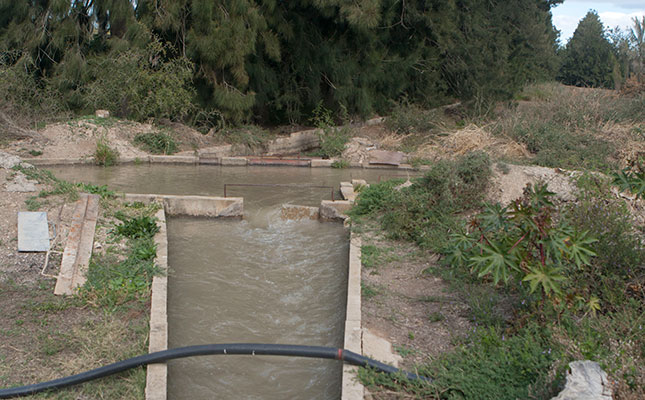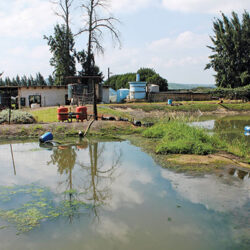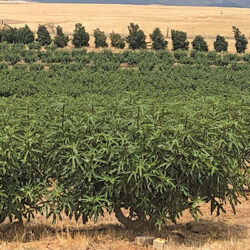Two of the biggest challenges facing agriculture are the unreliable supply and quality of water.
Speaking at the Combined Congress of Soil, Horticulture, Weed and Crop Production Scientists held in Bloemfontein earlier this year, Dr Willem de Clercq, a researcher at the Water Institute at Stellenbosch University, said these and other demands on agriculture needed to be addressed in order to continue producing food sustainably.
READ Water quality and quantity reach crisis levels
De Clercq, who previously worked as a soil scientist, says that expanding populations in many countries, including South Africa, will place increased demand on food production and natural resources.
Population growth has repercussions for the soil as well as water supply and quality. A threat that South Africa needs to guard against is water demand exceeding supply.
“For this purpose, we need a water budget,” he says.
This would entail efficient water planning, according to De Clercq, who adds that the crisis that hit the Western Cape last year meant that people were now more aware of the threat of disruption to water supply, and hence more inclined to work with water user associations.
He says that many stakeholders contact these associations daily about whether there is water available to accommodate expansion plans.
Breede River regional problem
De Clercq uses information from several projects conducted on the Breede River System to provide a regional perspective.
In this particular irrigation scheme, water is transported from the river to a catchment dam. From there, it returns to the river, then into the canal system and then to the farm dams, from where it is again pumped and distributed to the trees or crops via the irrigation system.
“This is a totally open system, with huge evaporation and water losses,” he says.
Electricity costs are also extremely high, pushing the estimated irrigation cost for the area to around R6 500/ha/year.
READ Water management: rainwater harvesting and better storage
De Clercq cites published statistics from a project carried out by the Water Research Commission, which found that only 30% of the water in the Breede River System finally ends up in the farm dams. Canal seepage losses account for nearly a quarter of water lost, with total losses amounting to 36%.
Of the roughly 63% of water applied, only 10% is used effectively.
Red flag for quality
Another major concern is effluent from local municipalities that enters the Breede River. According to De Clercq, the water quality is fairly poor in places, as it is compromised by salinity and chemical run-off from farms.
He warns of the risk that water pollution poses to fruit exports, saying new developments in analysing micro-pollutants suggest that inferior quality water will become a threat to fruit exports.
READ Well-managed soil: the key to high-yielding gold kiwifruit
“In 10 years’ time, if farmers continue using poor-quality water, as they are currently forced to do in some regions, they will not be able to export to Europe and it will place entire export industries in jeopardy.”
Why terroir matters
Conservation agriculture (CA) and specifically irrigation in CA should be viewed within both the regional and the farm contexts. De Clercq says that, for example, an irrigation system often does not match a farm’s soil type, which leads to a number of problems.
The principles associated with terroir are well known in the Western Cape, and De Clercq says this important principle should apply to the whole of South Africa.
READ How old tyres can stop soil erosion in its tracks
His definition of terroir includes the practice of choosing the right crop based on the natural conditions in an area such as soil, water and climate.
“We need to match irrigation systems to soil, especially to counter problems such as soil erosion,” he stresses.
He adds that many of the soil quality and erosion problems encountered by farmers are related to over-irrigation and compensation for poor-quality water. Many farmers in the regions in which he works over-irrigate due to the salinity of their water, or the chemical build-up in their soils.
However, this creates a vicious circle, as over-irrigation leads to waterlogging, which can lead to increased soil salinity, physical soil degradation and chemical pollution.
Many farmers also fail to measure the volume or quality of water used, and don’t test the quality of the soil water.
Poor farm planning is an additional problem.
He says that serious problems are emerging in established farming systems, where the irrigation design criteria do not enable farms to cope in demanding periods such as droughts. “Most of these farmers could not supply water in peak demand time.”
De Clercq says this relates to increases in economic units and the need for a faster return
by mega farms. For example, poorly developed root systems in fruit trees have become the norm; this is caused by over-irrigation or drip irrigation systems causing shallow root development.
“This is a big problem for us in dry spells because these plants are not very resilient.”
Wetted soil volume
The volume of soil that is wetted can be affected by the type of irrigation system used. Understanding the effects on salt accumulation or leaching, for example, can assist in improving farm planning in line with conservation aims and optimised production.
De Clercq explains that if a farmer wets a large soil volume using a pivot system, more salt is deposited and retained in the soil.
There will therefore be a slower movement rate of salts in the soil, and large volumes of water will be required to leach the salts during important seasons, such as winter in the Western Cape. There will also be less control of the salt load in the soil. Lower irrigation frequency will aid in management.
But lower irrigation frequency can be a negative factor for vineyards, for example. “Lower irrigation frequency doesn’t cool the vineyard, which is something we need to do with irrigation sometimes.”
In sum, a large wetted soil volume normally leads to better root development and is easier to manage during dry spells.
A smaller wetted soil volume normally implies less of a salt budget and fewer over-irrigations to get rid of the salt.
With subsurface drip, less water is used and there is less salt accumulation, enabling better control over salinity in the soil.
Renewal of our systems
De Clercq and his team have also investigated the feasibility of an alternative irrigation scheme for the Berg River. He believes this would alleviate water wastage in the river-based system, and result in dramatically reduced irrigation costs.
Conventional distribution systems draw water directly from rivers. An alternative, he suggests, is to install water pipelines.
READ Shortcomings of modern water pumps
According to the researchers’ calculations, installing a pipeline would reduce the cost of getting water to the farmers more than tenfold, lowering it from R6 500/ha/y to only R600/ha/y.
Looking specifically at the irrigation area below the Brandvlei Dam, they established that, based on a contour line, all the soil irrigated through the Breede system was below the dam level. “So we could use a pipe system in this regard, as most of the irrigation is in level areas very close to the river.”
In conclusion, De Clercq says that farmers need to do more with less; adaptation is needed for both sustainability and optimised production. Climate change adds its own complexities and there is also an environmental burden. “We have to design systems with lower environmental impact.”
There is a gap between measurement and application, according to De Clercq. Farmers report that they cannot really use the technical advice provided on soil water and soil water content, or apply it on their farms.
“We need to close that gap,” he stresses.
Phone Dr Willem de Clercq at the Stellenbosch University Water Institute on 021 808 4793 or email him at wpdc@sun.ac.za.




